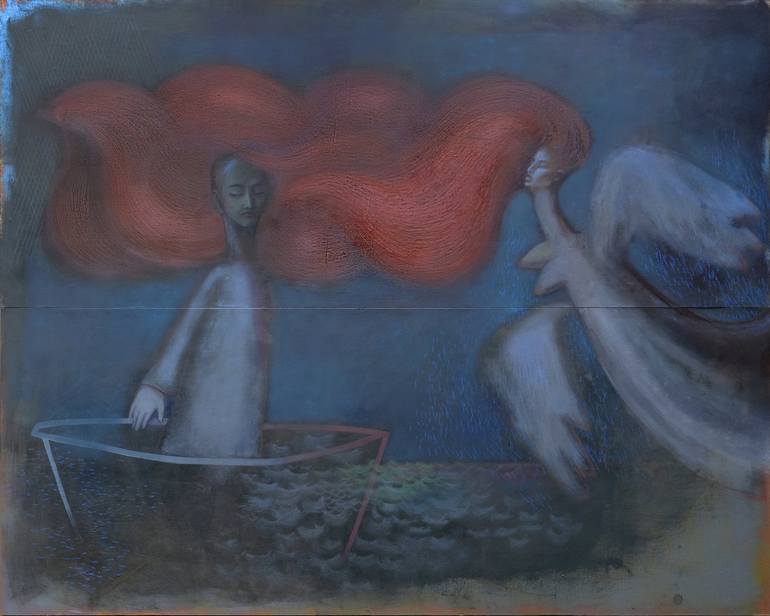






71 Views
5
View In My Room
Painting, Acrylic on Wood
Size: 52 W x 41.3 H x 0.4 D in
Ships in a Crate
$2,595
Shipping included
FREE 14-Day Returns
Trustpilot Score
71 Views
5
Artist Recognition

Artist featured in a collection
ABOUT THE ARTWORK
DETAILS AND DIMENSIONS
SHIPPING AND RETURNS
"The Song of the Siren" by Agnese Kurzemniece Mixed Media on plywood board Dimensions: 105 x 132 cm - Alternative title of the painting: "Deaf as Odysseus to the Siren's Song" Greek Mythology and the saga of Odysseus, in particular, have offered endless inspiration to artists and writers throughou...
Year Created:
2021
Subject:
Styles:
Mediums:
Multi-paneled Painting, Acrylic on Wood
Rarity:
One-of-a-kind Artwork
Size:
52 W x 41.3 H x 0.4 D in
Number of Panels:
2
Ready to Hang:
Not Applicable
Frame:
Not Framed
Authenticity:
Certificate is Included
Packaging:
Ships in a Crate
Delivery Cost:
Shipping is included in price.
Delivery Time:
Typically 5-7 business days for domestic shipments, 10-14 business days for international shipments.
Returns:
Free returns within 14 days of delivery. Visit our help section for more information.
Handling:
Ships in a wooden crate for additional protection of heavy or oversized artworks. Artists are responsible for packaging and adhering to Saatchi Art’s packaging guidelines.
Ships From:
Latvia.
Need more information?
Need more information?
I have a strong academic background, but over the last 10 years, oil paints have been replaced by acrylic paints. However, the interest in exploring humans in the broadest sense has remained unchanged. The images and themes are capacious and ambiguous, I have my own set of limited symbolic images, among wich the woman clearly plays a key role. It has unique, recognizable proportions and distortions. Through my artistic practice, I try to understand and feel some of the general patterns that nature and man live by. How we influence each other, how we shape each other, what are these archetypes, which explains our deepest interactions. Living through my personal experience and at the same time observing the world around me - people and nature, I find visual and poetic parallels embodied in universal schemes. Where landcapes are a lyrical scenographic background for the versatility of the inner world of man. I am concerned about the beauty and tragedy of life, the order and constancy of its flow, in which the brevity and uniqueness of each individual moment is drowned. Through symbolism and surreal scenes, I try to comprehend the world in which I am and of which I am a part. Pieces of my work are featured in private collections worldwide, also in Daugavpils Mark Rothko Art Centre, in Ogre History and Art Museum and Ventspils Museum. I'm a member of the Union of Latvian Artists Union and the Graphics Chamber of Riga. Several prize winner. Participating in the Venice Biennale 2022, within the framework of ARTBOX.PROJECT Venezia 1.0.
Artist Recognition

Artist featured by Saatchi Art in a collection
Why Saatchi Art?
Thousands of
5-Star Reviews
We deliver world-class customer service to all of our art buyers.
Global Selection of Original Art
Explore an unparalleled artwork selection from around the world.
Satisfaction Guaranteed
Our 14-day satisfaction guarantee allows you to buy with confidence.
Support Emerging Artists
We pay our artists more on every sale than other galleries.
